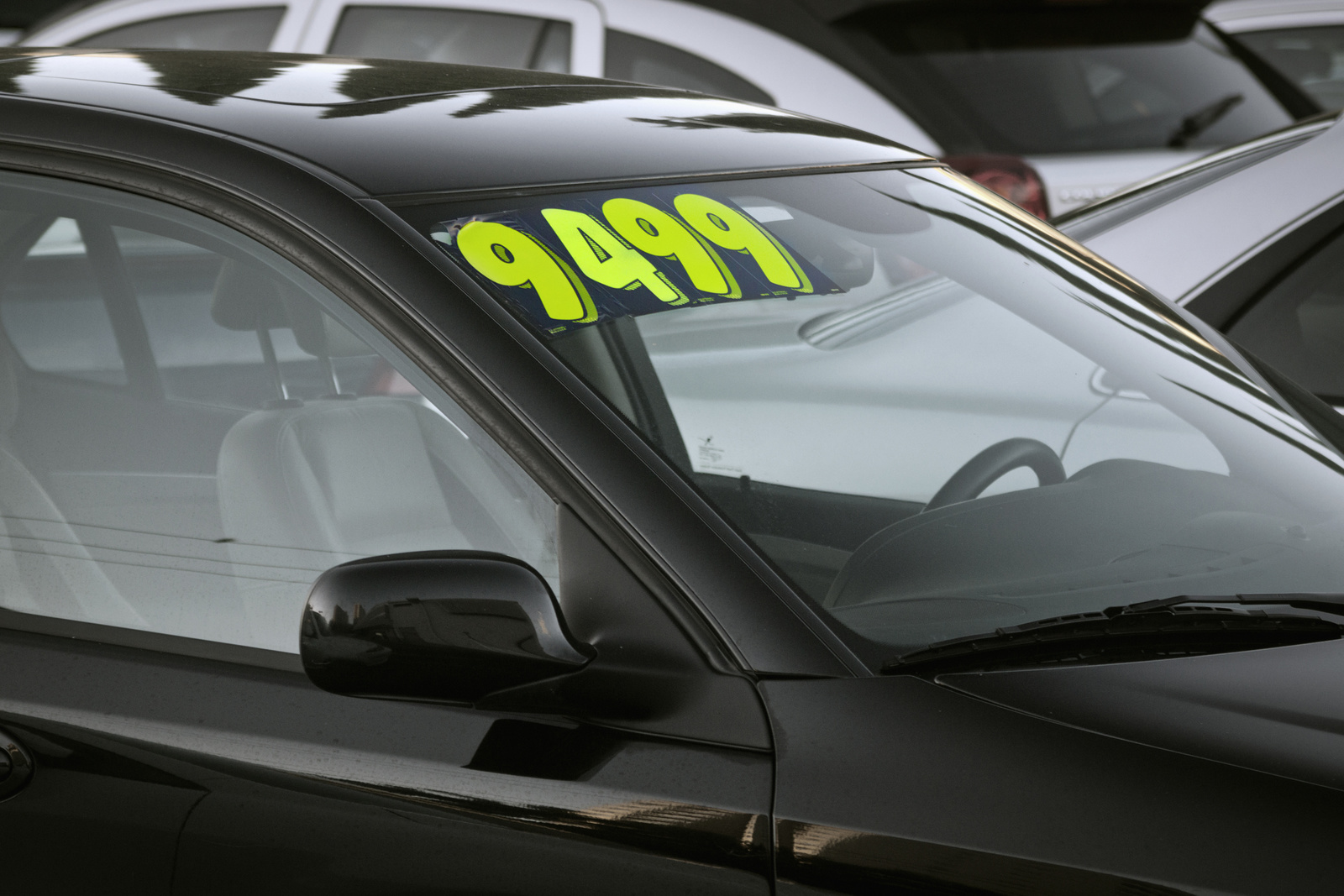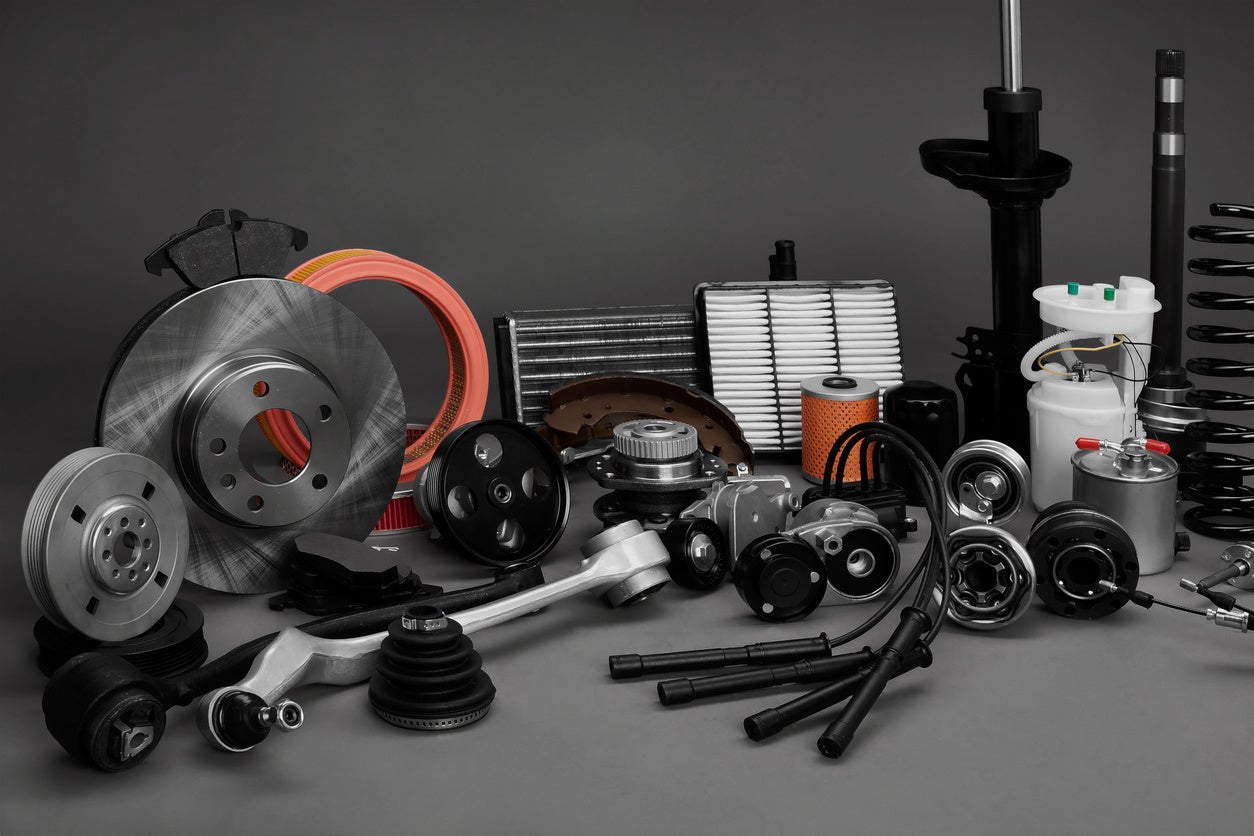How Much Do Car Dealerships Make A Year
Updated on: July 21, 2021
Standing exterior a motorcar dealership reveals an fleet of shiny new vehicles. The latest and greatest models are kept safely indoors on the showroom floor, simply there are plenty more outside. Wade a bit deeper into the ranks and you'll observe the used models lined up on the back row, buffed and looking for a new home in your garage.
Walk through the forepart door, glide across the sales floor, pass the Finance & Insurance Department and wander by the parts counter on your way to the store. If you could wait behind the curtains of the dealership, you would discover that each and every functioning y'all are passing by is gear up equally a profit center—all of them competing for the money in your wallet. So who typically wins this war of dollars, and how does the dealer actually make any money? The answers might surprise you.
New Automobile Sales

High price tags, factory fresh (complete with that new automobile smell)—yous would recollect the brand new inventory represents the biggest bucks, and in many ways, you would be correct. Because new cars are such a big-ticket item, new car sales business relationship for over half of the total gross sales at most dealers. Gross profits hover around $2,000 per motorcar, but from a net-profit standpoint, new car sales generally lose money.
Wait, what?
Yeah, the typical new car sold loses a dealership about $200.
Cheers to commissions, transparent pricing, dealership rebates, and what's known as "flooring planning," new cars turn out to be the sizzle, just not the steak for dealerships. A new machine dealer secures inventory by borrowing money, sometimes from the automaker itself, to get all those cars into the showroom and onto the lot.
The bottom line is that the longer the cars sit, the more interest the dealer has to pay its lenders. "Hold-back coin," small chunks of cash rewarded dorsum to the dealer by the manufacturer when a machine actually sells, make up for a portion of this. Overall, though, in that location is no money to be made on the sale of new cars. Cash flow, yes. Profits, no.
Used Auto Sales

Here's another loser for the dealer. The boilerplate retail net profit in 2016 from selling a used car was $65. The dealership's ability to make money selling used cars depends on many things, starting with how much money the dealer "has in it." This number depends on the merchandise assart the dealer fabricated to larn the used car. Add on the cost of whatsoever repairs necessary to get the motorcar set for resale and any repairs made under warranty after the sale, and you're left with paper-thin margins. Commissions are too paid on used car sales, and the longer a vehicle sits on the lot, the less it's worth. Studies from the National Motorcar Dealers Clan (NADA) recommend that used cars sell in 45 days or less. If they sit longer, they are money losers.
Merchandise-Ins

Dorsum in the onetime days, the car business was much less transparent. Car values were determined and published in books that were available only to dealers. The books—which were unremarkably blueish—provided a "retail," "low wholesale," and "loftier wholesale" value for every automobile model e'er built. Or course, all the numbers were subject field to the condition of the automobile.
The all-time possible trade-in scenario for the dealership would be to offer a car buyer the "depression wholesale" number for a trade and then sell a new auto to the aforementioned customer for the Manufacturer's Suggested Retail Price (MSRP). The dealership could so put the merchandise-in on the lot and ask the "retail" price. The dealer would make expert money on the trade and the sale of the new car. Those days are long gone.
CarGurus tin tell you what your trade is worth in a couple of clicks on our [Car Values](https://www.cargurus.com/Cars/instantMarketValue.action) folio, and a quick search will allow you to compare prices for the aforementioned machine at multiple dealerships and from private owners. Thanks to this level of transparency, simply buyers who don't exercise their homework to learn what their car is really worth, and are put off by haggling, stand to help auto dealers brand money on trades.
Auctions

Dealers buy and sell cars at machine auctions. Some auctions are open to the public, but others require a "dealer's license" to participate. Auctions can be sexy diplomacy filled with collectible cars and rich people—or they tin can be held by police departments or the IRS. Auctions are risky propositions even for the professionals.
Dealers may have cars to auctions that have been on the lot likewise long or are also expensive to ready. Dealers may buy cars at auctions if they accept room in their inventory for certain quick-selling models. Pure commercialism, risk and advantage: Automotive auctions are not for amateurs, and even savvy machine dealers can make costly mistakes. These are yet another risky-at-all-time potential profit centre.
F&I

If you're ownership a new or used car, you will spend fourth dimension with the Finance and Insurance salesperson. Along with loaning you the money to buy your car (at a healthy interest rate), they want to sell you lot an extended warranty, gap insurance, undercoating, fabric protection, and anything else y'all can remember of. Why? Because we've finally found a winner for the dealer. Co-ordinate to NADA, net profits are pegged at ii.eight% of the sales cost of new car sales. For used vehicles, it'due south fifty-fifty better, with a profit margin clocking in at 3.7%. Turns out selling money and peace of mind is more than profitable than slinging rubber and steel.
Parts and Service

If y'all buy a new car (or a certified pre-endemic motorcar), it comes with some kind of warranty from the carmaker. If you lot have a problem with the car and it'southward "under warranty," you won't accept to pay to get it stock-still. Who does pay? The motorcar manufacturer pays the dealership's service department to gear up a new car, but usually not at the same hourly rate that you, as a customer, would have to pay. Therefore the dealer would adopt to do every bit little warranty work every bit possible, because information technology doesn't pay as well. If it'southward a used car, they really don't desire to perform warranty work—they commonly pay for that out of their pocket.
By combining warranty piece of work with non-warranty service work, rolling in the profit from parts sales and the work that'southward coming out of the torso shop, you'll find the big turn a profit leader for the dealership. The muddy work in the dorsum of the building generates a xv.half dozen% net profit rate. About of that comes from mechanical repairs. Dealers likewise sell wholesale parts to contained garages, and some will sell retail parts over the counter to people just like you, at a markup, of course.
And so the next fourth dimension you lot visit or drive by a dealership with all that shiny metal parked around it, call up that all of that is just for show. Those new cars are essentially loss leaders for the dealership: Information technology's the stuff going on out back that really makes the dough.
Related Topics
Who to Look at a Automobile Dealership
Everything Yous Demand to Know About Leasing
How To Negotiate a New Car'south Price
Read More than CarGurus Tips and Communication
Source: https://www.cargurus.com/Cars/articles/show_me_the_money_how_do_car_dealerships_make_their_profit
Posted by: johnsonimation.blogspot.com

0 Response to "How Much Do Car Dealerships Make A Year"
Post a Comment